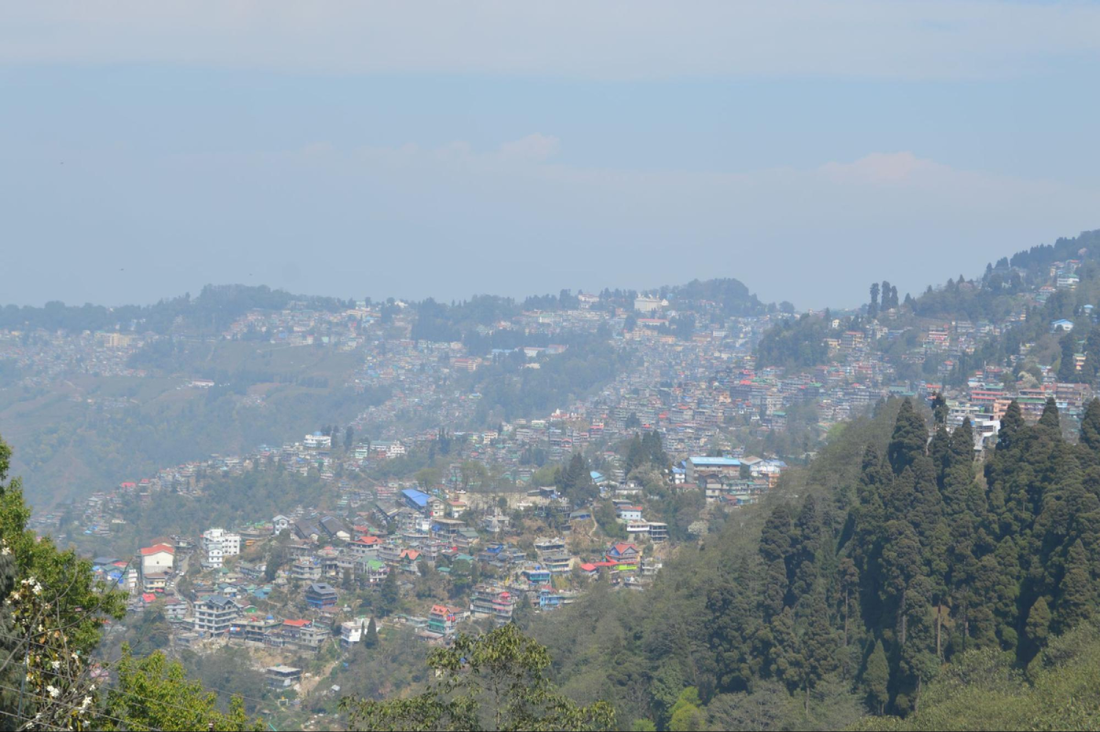REAL founder, David, has recently returned from a trip to India where he visited our partners and tea suppliers. He was previously scheduled to visit the mountain tea gardens of Northern India in late March 2020, but we all know how that story ended…
While he was there, David took a leaf out of Simon Reeve’s book, documenting his travels and learnings. So, without further ado, here’s a look at the beginning of David’s travel diaries.
---
After over 24 hours of aeroplanes and airports, I finally landed in Bagdogra airport, almost 3 years to the day since my last planned visit to Darjeeling.

Bagdogra/Siliguri is almost 600 km due north of Kolkata but is only at 126m elevation. Getting from one to the other takes you across the flat plains of West Bengal. But as you travel north from Siliguri, it only takes 12 km for the world to change very dramatically.

At this point you reach the low foothills of the Himalayas. “Low” is a relative term though. Over the next 20 km as the crow flies, or 50 km by road, you gain almost 2300m of elevation. Putting that into perspective, Ben Nevis, the highest peak in the United Kingdom, is a comparatively meagre 1345m high.


You immediately notice the difference. The road takes a turn upwards, one switchback after another, each of which put the tightest hair pin bends in Switzerland to shame. You’re plunged into lush, wet, temperate forests burgeoning with needlewood, oak, Indian chestnut and interspersed from time to time with towering bamboo.
You are quickly looking down sheer slopes on either side of the road. The winding road is narrow and packed with small trucks, pick-ups, jeeps and taxis, all vying to overtake around treacherous bends. Towns and villages hang precariously off the slope, almost defying gravity.
And these are not just small villages. Kurseong, the first town we come across, is a bustling hill town of 45,000, built at an altitude of 1500m, on a piece of land tilting at about 30 degrees. Houses are built on stilts, looking out across the valley below.

Darjeeling itself sits atop all of this at 2300m, with a total population of 120,000 it is a busy and bustling hilltop town.
Known locally as “The Queen of the Hills”, but actually meaning the Land of the Thunderbolt in Tibetan, Darjeeling was created from scratch by the British as a sanatorium and summer resort. The land that covers the broader district of Darjeeling was leased, and eventually annexed, by the British East India Company from the Raja of Sikkim in 1835. And the British set about building a road to connect the hill station, hotels in Kurseong and Darjeeling, and a series of comfortable private houses. Over the next 10 or so years, the population rose from below 100 to over 10,000 with an influx from Nepal, Sikkim, Bhutan and the surrounding area.

Tea planting was first introduced to Darjeeling during the Opium Wars with China in the mid 1800s. While India had been successfully growing a tea cultivar in the lowlands of Assam (Camellia Sinensis Assamica), the other variant (Camellia Sinensis Sinensis) had been selectively bred to grow at altitude. The people of Darjeeling began to assess whether they could grow the Sinensis Sinensis at altitude in Darjeeling, by 1852 the first experimental tea gardens had been established, followed by the first commercial tea gardens which were planted out by 1856.

Darjeeling is to Indian tea what Burgundy is to French wine: small vineyards, producing very refined, high quality and delicate wines. The average tea estate in Darjeeling averages only 150-250 hectares compared to Assam at 2.5-3.0 times that size. As a region, Darjeeling only produces around 350 kg/hectare of estate, whereas Assam will generally produce over 1000 kg/hectare and lowland regions in the North East of India could produce as much as 2000 kg/hectare.

Darjeeling prioritises quality over quantity. Firstly the cultivar is much more refined. The small leaf of the Camellia Sinensis Sinensis produces a more delicate tea, with less bold and brassy body and astringency than the Assam leaf. The slow pace of growth, and the nature of the soil at 2000m altitude means that the leaf produces incredible depth and subtlety of flavour that is incomparable to other Indian teas.
And as I settle down to watch the sun go down behind the Himalayas from the garden of the Tumsong Tea Estate guest bungalow with a glass of perfectly brewed first flush tea in my hand, I’m falling in love with this region.
---
David

